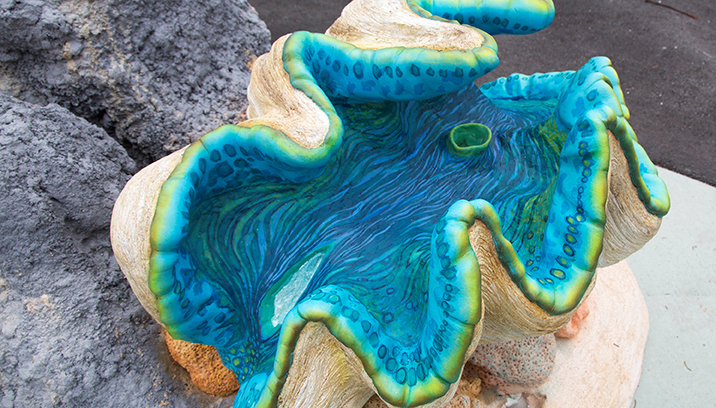Giant clam
Tridacna gigas

Fascinating Facts
- As the world’s largest mollusk, they can be 4 ft long and can weigh over 500 pounds!
- Every individual has a different coloration– no two giant clams look the same!
- Once fastened to a spot on a reef or rock, the giant clam is there to stay.
- The adductor muscle of the giant clam is considered a delicacy, and overharvesting of the species for food, shells, and the aquarium trade are their greatest threats.
Habitat/Diet
The mantle (material between the shells) of Giant clams has two siphons – one ‘inhale’ and one ‘exhale’. They use their ‘inhale’ siphon to pull in seawater that is filtered for plankton. Most of the clam’s nutrients come from a mutually beneficial relationship with a unicellular algae called zooxanthellae. They live in coral reefs, stationed within 20 feet of the surface.
Status in the Wild
Vulnerable – IUCN 1994
Range
South Pacific and Indian Ocean waters
Location in the Zoo
Invertebrates Zone of the Sculpture Learning Plaza
